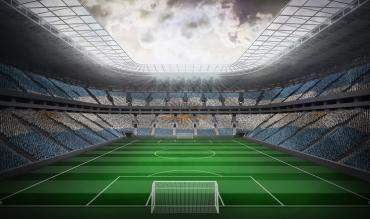The Big Five in Argentina account for over 85% of football fans. These teams are supported nationwide, compared with many of their peers which are only supported in their local area.
While this traditional term has no fixed definition, and there are several candidates to make it a ‘Big Six’, these sides have historically been the most successful and had the largest fanbases.
Biggest Football Clubs in Argentina:
-
Boca Juniors
-
River Plate
-
Independiente
-
San Lorenzo
-
Racing
All of the quintet are located in the Greater Buenos Aries area, meaning the country’s two biggest derbies -- El Superclásico and the Avellaneda derby – are comprised of Big Five teams.
Inevitably, there is a degree of subjectivity when ranking the five biggest clubs in Argentina. Here are our latest rankings:
Boca Juniors
Being the former club of Diego Maradona is enough to get Boca Juniors into this top five. Then consider they’re the second-most successful club in Argentina and have won the Copa Libertadores on six occasions.
Of course, Maradona isn’t the only world star to pull on the iconic blue and yellow jersey. Carlos Tevez, Walter Samuel, and Juan Roman Riquelme have also represented Los Xeneizes.
Even on the rare occasion when Boca aren’t a football betting favourite for silverware, the club still attracts widespread media attention and consistently sells out La Bombonera.
A study in the early 2020s indicated Boca are the best-supported club in Argentina with several million more fans than any other team.
It’s unlikely that changes any time soon, with the club continuing to accumulate silverware and boasting a squad which features former Manchester United men Edinson Cavani and Ander Herrera.
River Plate
Crowned champions of Argentina on 38 occasions, River Plate could easily have been in top spot.
The club is consistently a betting favourite in domestic action and has enjoyed plenty of success on the continental stage with four Copa Libertadores wins.
Like Boca, River Plate have produced several Argentine greats with Pablo Aimar, Hernan Crespo, and Javier Mascherano all starting out in their academy.
The Superclásico teams don’t have a duopoly over the league title like Celtic and Rangers do in Scotland, but when it comes to club size, they are incomparable to the chasing pack.
It’s estimated River Plate have north of 10 million fans in Argentina, which is over double that of the third-largest fanbase.
Independiente
The 21st century has brought some tough times for Independiente, meaning silverware has been hard to come by.
Facing financial struggles and having to sell many of their better players, the club is still fighting to get back to the top of Argentinian football.
A club with their history always remains huge. Seven Copa Libertadores wins speaks for itself, while they have also had 32 top two finishes domestically with 16 title wins.
Players like Emiliano Martinez and Sergio Aguero have come through the academy, with their sales ultimately helping the club’s long-term financial outlook. Fans can only hope this period of turbulence comes to an end in the near future.
For neutrals, though, Independiente’s impact on the sport is significant, which warrants the third spot in these rankings.
San Lorenzo
Since San Lorenzo were founded in 1908, the club hasn’t been a full decade without a top two league finish.
Their continental record is a long way from the top three teams, yet San Lorenzo have a Copa Libertadores to their name in 2014 and won the Copa Sudamericana in 2002.
Sustained contention earned San Lorenzo plenty of bonus points here. It’s one thing to have periods of dominance, but the biggest clubs are always relevant and in the mix for hardware to add to their club museum.
As the first Argentinian team to compete in the Libertadores and the first to win the Copa Sudamericana, San Lorenzo have broken new ground throughout their history.
The club isn’t as valuable as Boca or River Plate, but you cannot learn about the development of football in Argentina without an in-depth understanding of Los Cuervos.
Racing
Between 1972 and 2001, Racing only had one top two finish. It was a toss-up between the final two teams here, but Racing’s lengthy period out of contention is enough to put them behind San Lorenzo.
Declared bankrupt in 1997, Racing almost ceased to exist at the end of the last century. Remarkably, their title drought was ended in 2001, but this didn’t ensure a period of stability, as the club was fighting against relegation only a few years later.
The story of Racing is turbulent, dramatic, and packed with silverware. There was never any doubt they would be in the top five, and they could well climb above San Lorenzo in the coming years under the presidency of Diego Milito.
*Credit for the photos in this article belongs to Adobe*


